Text
Sport Venue & Event Management Entry 4
Sport event bid analysis for a global sport
There are many considerations and stages during the bidding process for a global sports event. Initially the host region and country need to work out if it is beneficial to host the event and feasible to host the event. The owner of the event, the sport’s governing body must see that the host has the facilities and finances to make the event a success. Lee and Chappelet (2022) state there are different bidding process features and requirements for mega-sports events such as the Olympics and FIFA World Cup compared to major events like the FIBA Men’s Basketball World Cup. For the 2023 FIBA Basketball World Cup, the event was hosted by multiple countries for the first time. They were the Philippines, Indonesia, and Japan (Thorogood, 2023). Byun et al. (2021) explain that the increasing economic pressures of hosting an international sports event have led to more cities entering a joint bid to co-host the event.

The 2023 FIBA Basketball World Cup bidding process was approved by the FIBA executive committee on the 7th of June, 2016. Hosting these major sports events requires extensive planning and studies around feasibility and impacts so decisions are made many years beforehand. Within the month FIBA sent all its national member federations out expressions of interest in hosting the event. Once the cut-off for a response passed on the 31st of August, the applicant phase and candidate phases proceeded until the winning hosts were announced at the end of 2017 (FIBA Basketball, 2016). During the candidate phase timeline there were workshops for the candidates with FIBA representatives, preparation and submission of the Candidature File, the FIBA Evaluation Commission visited each candidate nation to assess the bids and report to FIBA’s Central Board, signing and submission of the host nation agreements and guarantees, and announcement of the host nation made by Central Board (FIBA Basketball, 2017). The assessment and evaluation criteria FIBA Central Board uses to select a host nation include but are not limited to are; organisational factors, commercial factors, spectator attendance, sporting legacy, and public sector guarantees (FIBA Basketball, 2024). Each of these factors has sub-categories for the FIBA Central Board to extrapolate. Bidding for major sports events isn’t always popular with residents of the potential host nation and there may be anti-bid protest movements with social media playing a role in fuelling these (McGillivray et al., 2021). Regardless of any possible negative sentiment, major sports events are being bid on by multiple host nations and regions with a hunger for live sports still being great.
youtube
References
One Sports. (2017, December 10). MVP’s message after winning the FIBA Basketball World Cup 2023 bid [Video]. YouTube. https://www.youtube.com/watch?v=aaz3aP4iuZo
Byun, J., Ellis, D., & Leopkey, B. (2021). The pursuit of legitimacy through strategic alliances: the examination of international joint sport event bidding. European Sport Management Quarterly, 21(4), 544-563. https://doi.org/10.1080/16184742.2020.1759668
FIBA Basketball. (2016, June 8). Executive Committee approves bidding process for FIBA Basketball World Cup 2023. Press Release. https://www.fiba.basketball/news/executive-committee-approves-bidding-process-for-fiba-basketball-world-cup-2023
FIBA Basketball. (2017, June 1). Leading nations, exciting multiple host candidacies headline bids for FIBA Basketball World Cup 2023. https://www.fiba.basketball/news/leading-nations-exciting-multiple-host-candidacies-headline-bids-for-fiba-basketball-world-cup-2023
FIBA Basketball. (2024). Evaluation. Event Host. https://www.fiba.basketball/event-host/evaluation
Lee, K. H., & Chappelet, J. L. (2022). Does country attractiveness matter in international competition? The case of countries’ bidding to host major sports events. International Journal of Public Administration, 45(8), 675-686. https://doi.org/10.1080/01900692.2021.1879851
McGillivray, D., Lauermann, J., & Turner, D. (2021). Event bidding and new media activism. Leisure Studies, 40(1), 69-81. https://doi.org/10.1080/02614367.2019.1698648
Thorogood, J. (2023, August 24). What you need to know about the FIBA World Cup. Sports. Global Issues. DW. https://www.dw.com/en/2023-fiba-basketball-world-cup-what-you-need-to-know/a-66618644
0 notes
Text
Sport Venue & Event Management Entry 3
Olympic Games legacy
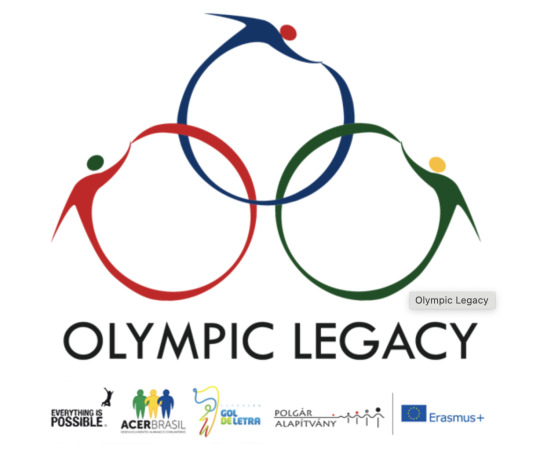
The Olympic Games is an event with grandeur like no other. The Olympic Games legacy of a country hosting the event can be measured by the economic effects of the budgeting, and construction within a city. Lack of consideration in legacy planning when planning on hosting an Olympic Games can lead to the “white elephant phenomenon” (Kobe et al., 2021). This occurs when the development and construction of venues in preparation for the mega-event in a city are no longer utilised or used frequently enough due to a lack of future planning. These venues can then become visually unappealing and run down. Dowling and Harris (2022) suggest research supports the idea that the Olympic Games legacy spruiked by politicians when pitching the event to the public, is rarely valid. They go on to explain there is evidence the 2012 London Olympics and Paralympics goal to ‘inspire a generation’ by increasing youth participation in sports failed. These results can vary across each Olympic Games however there has been an increasing negative sentiment amongst sections of the public around the adverse legacy left on host cities after the Olympics.

There can also be positive effects of the Olympic Movement before, during and well after the Olympic Games are held in a city, with the benefits being long-term (Olympics, 2024). Economic benefits of hosting an Olympic Games can include a region and country developing: their global profile; the business sector; career opportunities; diplomatic relations; the tourism and events industry; and the knowledge and skills of their workforce. Scheu et al. (2021) explain research into the legacy of the Olympic Games has mainly been done on the Summer rather than Winter Olympic Games with a focus on beliefs and behaviours, and the urban development facet of legacy.
youtube
Muller et al. (2021) comparison of the 16 Olympic Games between 1992 and 2020 found the sustainability of the event has declined over time however, overall the event still has a medium level of sustainability with the cost of hosting a main issue. Within the Legacy Strategic Approach Moving Forward document put together by the International Olympic Committee, they outline key Sustainable Development Goals they aim to contribute to (International Olympic Committee, 20217). The reasoning behind legacy being so important to the Olympic Movement is it supports the Olympic Movements vision of building a better world through sport. Harmonious development of humankind and stimulating peaceful society can be a by-product of the service of sport at the Olympic level.
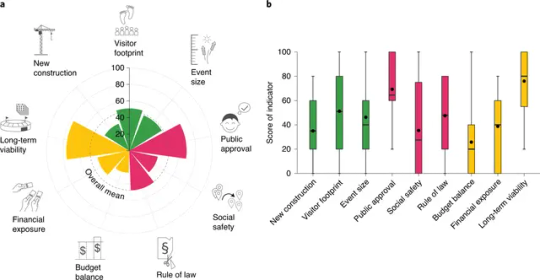
a, Mean values of nine sustainability indicators. b, Distribution of values. Dots show the mean value; middle lines show the median; box limits show upper and lower quartiles; whiskers show maximum/minimum.
References
Dowling, M., & Harris, S. (2022, July 27). London 2012 Olympics: how it boosted medal winning but failed to inspire a generation. The Conversation. https://theconversation.com/london-2012-olympics-how-it-boosted-medal-winning-but-failed-to-inspire-a-generation-187383
International Olympic Committee. (2017). Key Sustainable Development Goals to which the IOC aims to contribute [screenshot]. Legacy Strategic Approach Moving Forward. https://stillmed.olympics.com/media/Document%20Library/OlympicOrg/Documents/Olympic-Legacy/IOC_Legacy_Strategy_Full_version.pdf
IOC Media. (2020, October 31). World Cities Day 2020: The power of sport to build healthier, more sustainable urban communities [Video]. YouTube. https://www.youtube.com/watch?v=tzcmd9Xw9cs&list=PLX9eJ_kgiRLbTtixNPzdvVYMWtkLnFVaU&index=2
Koba, T., Gong, H., Ross, W. J., & Grady, J. (2021). Sustainable Olympic development: A proposed benchmark for managing economic outcomes. Journal of Global Sport Management, 6(1), 49-69. https://doi.org/10.1080/24704067.2019.1565925
Müller, M., Wolfe, S. D., Gaffney, C., Gogishvili, D., Hug, M., & Leick, A. (2021). An evaluation of the sustainability of the Olympic Games. Nature sustainability, 4(4), 340-348. https://doi.org/10.1038/s41893-021-00696-5
Olympics. (2024). Olympic Legacy. IOC. https://olympics.com/ioc/olympic-legacy
Olympic Legacy. (2024). About the project. https://olympiclegacy.eu/index.php/about-the-project/
Scheu, A., Preuß, H., & Könecke, T. (2021). The legacy of the Olympic Games: A review. Journal of Global Sport Management, 6(3), 212-233. https://doi.org/10.1080/24704067.2019.1566757
0 notes
Text
Sport Venue & Event Management Entry 2
Sustainability practice of a sports venue
The sustainability practices of sports venues such as those at Climate Pledge Arena in Seattle, have an increased level of importance with everyone becoming more aware of the effects of climate change. Climate Pledge Arena was named in 2021 by naming rights sponsor Amazon, though it was originally known as the Seattle Coliseum when it was first built in 1962. The venue mainly hosts music and sports events. It has been home to many sporting teams based in Seattle however it is currently home to the WNBA’s Seattle Storm, the University of Seattle’s men’s basketball team and the NHL’s Seattle Kraken (Warner, 2023). The stadium has undergone several renovations, with its most impactful occurring between 2018 and 2021, which was overseen by construction company Mortenson. Francis et al. (2023) suggest there has been a recent focus on environmental performance concerning stadium design and construction with countries and mega events committed to reducing carbon emissions. Sustainability was maintained when renovating through the use of existing materials. This included maintaining the original roof, and rescuing the curtain wall and windows systems of the stadium (Obando, 2021). To be the most responsible, progressive and sustainable arena in the world is the goal of Climate Pledge Arena. The arena was the first in the world to be awarded the International Living Future Zero Carbon Certification (Climate Pledge Arena, 2024).

Many of the key attributes of sustainability are met by Climate Pledge Arena such as waste management, efficient lighting systems, public transportation, and water conservation. Their waste management has received TRUE (Total Resource Use and Efficiency) Platinum certification with over 90% of arena waste avoiding landfill executed with a focus on fan engagement and having the right sized bins and colour-coded bin bags. Debrah et al. (2021) explains the last decade has seen more youth have a greater awareness and positive environmental attitude, without the practical experience in how to best put waste management into practice. These simple colour codes are an easy way to engage the younger fans to practice sustainability. The lighting at Climate Pledge Arena is 100% powered by renewable energy with on-site solar panels on the roof and off-site locally purchased wind farms. Public transportation is the preferred method to reduce the carbon footprint of attendees so transportation is free to publicly ticketed events and games in the hope 25% of patrons use this. Climate Pledge Arena also has leading water conservation practices with ultra-efficient showers, waterless urinals and a rain-to-rink system where a 15,000-gallon cistern captures water from the high levels of rainfall in Seattle, which is used to create ice for the rink. Xu (2020) states the importance of rainwater utilisation systems in sports venues with the obvious scarcity of water resources. The arena has accomplished Silver LEED (Leadership in Energy and Environmental Design) certification (Climate Pledge Arena, 2024).
youtube
References
Climate Pledge Arena. (2024). Sustainability. https://www.climatepledgearena.com/sustainability/
Climate Pledge Arena. (2023, June 22). How to Access your FREE Public Transit Pass with your Climate Pledge Arena Ticket [Video]. YouTube. https://www.youtube.com/watch?v=3RKUu9G6f4w
Debrah, J. K., Vidal, D. G., & Dinis, M. A. P. (2021). Raising awareness on solid waste management through formal education for sustainability: A developing countries evidence review. Recycling, 6(1), 6. https://doi.org/10.3390/recycling6010006
Francis, A. E., Webb, M., Desha, C., Rundle-Thiele, S., & Caldera, S. (2023). Environmental sustainability in stadium design and construction: A systematic literature review. Sustainability, 15(8), 6896. https://doi.org/10.3390/su15086896
Obando, S. (2021, October 20). On site: An inside look at the construction of Seattle’s $1.15B Climate Pledge Arena. Construction Dive. https://www.constructiondive.com/news/climate-pledge-arena-seattle-mortenson-construction/607484/
Warner, A. (2024, April 17). World’s Most Sustainable Sports Venues. Rotowire. https://www.rotowire.com/article/worlds-most-sustainable-sports-venues-71405
Xu, H. Z. (2020). Environmental Optimization Design of Rainwater Utilization System in Large Sports Venues under the Influence of Ocean Climate. Journal of Coastal Research, 104(sp1), 887–890. https://doi.org/10.2112/JCR-SI104-152.1
0 notes
Text
Sport Venue & Event Management Entry 1
Design innovation of a sports venue
An example of design innovation of a sports venue is Allianz Arena in Munich, Germany. The stadium construction began in October 2002 after a stadium build referendum was held in Bavaria that a majority 65% of people voted in favour of (Allianz Arena, 2024). Completed in April of 2005, Allianz Arena initially had joint ownership with FC Bayern Munich and TSV Munich 1860 having a 50% ownership share each. The state-of-the-art stadium build cost $340 million euros and was designed by Swiss Architects Herzog and de Meuron together with the support of Alpine Bau and Hypo-Verinsbank (HVB). Kucukvar et al. (2021) state design innovation is now allowing venues such as the modular shipping container stadium to be built, dismantled, relocated and reused. A feature of the stadium is the exterior cladding that is made up of 2874 translucent diamond metal panels of ETFE (ethylene-tetrafluoroethylene copolymer) (Rethinking The Future, 2022).
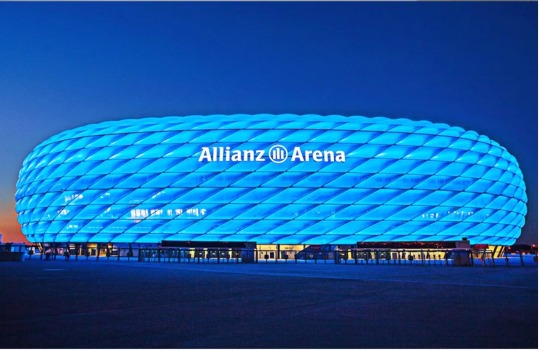
These panels can be illuminated in red, white or blue. Red and blue for Munich’s two biggest football teams FC Bayern Munich and TSV 1860 Munich and white for the German national team. Allianz Arena is an example of Parametric Architecture with panels that fit together geometrically and help make the stadium visually appealing during the day and at night with Allianz Arena standing out in Munich. Bianconi et al. (2020) explain that the rapid evolution of visual optimization in stadium design has brought two Italian architects’ and mathematicians’ vision of Parametric Architecture to reality over recent decades.

Another feature of Allianz Arena is the roof membranes are 1/30th of the weight of glass while being self-cleansing and ventilated. These features are made from suitable materials and their properties make maintenance and cleaning easier. Allianz Arena has an impressive capacity of 75,024 seats and can accommodate 13,342 in standing areas. Functionality is included with the design of Allianz Arena having a press club area for the media with 350 seats. It also has hospitality aspects covered with 6000m2 of catering facilities that include a bistro that can accommodate 400 people, along with a fan restaurant at either end of the stadium that holds 1000 people each.
In mid-2024 Germany hosts the 17th UEFA European Championship, EURO 2024, with Allianz Arena hosting a handful of games including the opener (Okello, 2024). Allianz Arena has recently undergone renovations in preparation for the event with the latest 5G mobile technology installed allowing blanket coverage in and around the stadium. This giving the fans and media the greatest level of connectivity. Yang and Cole (2020) discuss the advent of smart stadiums and innovation in stadium design adapting to the hyper-digitalisation of sport with the way the attendee can engage with the sport using mobile phones that use the updated stadium networks.

References
Allianz Arena. (2024). Arena. Facts. General Information. https://allianz-arena.com/en/arena/facts/general-information
Behance. (2014). Allianz Arena Parametric Model Study [screenshot]. https://www.behance.net/gallery/21355095/Allianz-Arena-Parametric-Model-Study
Bianconi, F., Filippucci, M., Buffi, A., & Vitali, L. (2020). Morphological and visual optimization in stadium design: a digital reinterpretation of Luigi Moretti's stadiums. Architectural Science Review, 63(2), 194-209. https://doi.org/10.1080/00038628.2019.1686341
Kucukvar, M., Kutty, A. A., Al-Hamrani, A., Kim, D., Nofal, N., Onat, N. C., Ermolaeva, P., Al-Ansari, T., Al-Thani, S. K., Al-Jurf, N. M., Bulu, M., & Al-Nahhal, W. (2021). How circular design can contribute to social sustainability and legacy of the FIFA World Cup Qatar 2022™? The case of innovative shipping container stadium. Environmental Impact Assessment Review, 91, 106665. https://doi.org/10.1016/j.eiar.2021.106665
Okello, S. (2024, April 24). Euro 2024 final stadium: Which city is host? Football Ground Guide. https://footballgroundguide.com/news/euro-2024-final-stadium-host-city
Rethinking The Future. (2022). 10 Innovative football stadiums around the world. Designing for Typologies. https://www.re-thinkingthefuture.com/designing-for-typologies/a3309-10-innovative-football-stadiums-around-the-world/#bdde3b6945a570b82487c154e3e68b566ee3e087#207680
X. (2020). FC Bayern Munich. Allianz Arena >>>>>> [screenshot]. https://x.com/FCBayernEN/status/1304051862488985600
Yang, C., & Cole, C. L. (2022). Smart Stadium as a Laboratory of Innovation: Technology, Sport, and Datafied Normalization of the Fans. Communication & Sport, 10(2), 374-389. https://doi.org/10.1177/2167479520943579
0 notes
Text
Entry 7: Reflection on the subject with respect to your starting point, new learnings and experiences, and how this will assist you from a career development perspective.
Transition to professional practice has been delivered intensively to prepare us for our internships. I now have a greater understanding of the professionalism expected to be successful when applying for internships with the valued internship partners at Holmesglen. My resume hasn’t changed too much since the start of this subject other than some minor tweaks, although, my understanding of best practices and why each section is important, and the value of a strong unique value proposition has strengthened. Listening to former students, internship partners and industry guest speakers was extremely interesting, informative, and valuable during this unit. Hearing about recent student experiences and when interns had achieved great results that led to greater career opportunities was encouraging as a student in my final year.
I had minimal previous experience writing cover letters that address selection criteria, so workshopping these with the ability to get peer and teacher feedback I found very useful in preparation for the assessment and internship interview process. From what I have learnt customisation is key. You should have the bones of a relatively generic professional resume and cover letter, and then work from there to customise both depending on the position description. With resumes, you must double, and triple check the spelling and have it proofread as this could quickly lose you an opportunity to interview.
Another learning I have gained was the importance of building and maintaining professional relationships when networking. Knowing that building a rapport with one individual may not land you your dream job directly, though they may be able to assist you on the path to the career you want. In the same breadth, do not burn bridges as large as the sporting industry may be, the executives commonly interchange with each other, so everyone seems to know one another somehow. Being active on LinkedIn and regularly updating information is important as recruiters will look you up especially if it is on your resume. The experiences of practising interviews with my peers and learning different techniques to improve how I present myself to future employees are invaluable. Building my confidence and readiness to approach employers and outline how I can assist their organisation has been great. The value of knowing your personal brand and being able to articulate and sell yourself in a competitive labour market has been useful. I look forward to gaining more real-life experience within the internships and learning more about my capabilities and areas for improvement through regular feedback.
0 notes
Text
Entry 6: Critical reflection on your experience of and performance in your interview practices and assessment. How have you developed your technique? What do you need to focus on? Use your peer feedback to assist.
I am only able to critically reflect on my experiences practising interviews with peers as I haven’t completed my official interview assessment yet. Before the official interview practice, I found the preparation and videoing of our elevator pitch helpful in viewing my mannerisms, and posture and hearing how I present myself. This was an uncomfortable process that is an area for growth though I felt improved after the 3rd or 4th attempt. Once I was alone at home, I did have a few attempts at this in front of the mirror which although feeling odd, was still helpful practice.
In class, I completed three sets of interviews. First was the two-on-one interview with Max and Kirra. I received written and verbal feedback after answering several questions about myself and why they should choose me to join their organisation. The written feedback stated it was a great elevator pitch, and that I displayed a great deal of confidence, and knew what I was about. When commenting on my body language it was stated that I looked relaxed with an open posture. I asked for clarification and was told this was positive, open and inviting. And lastly, when evaluating my language and engagement the response was, I was well-spoken and able to articulate my values and aspirations. This was all quite positive and had me feeling less daunted by the experience. I found making eye contact with each person who was addressing me was a key to remaining engaging during this process.
Secondly, Daniel and I practised interviewing each other with questions that were created by one another. As I do not know Daniel too well, this was probably the closest to an official one-on-one interview I was going to get to practice with before the internship assessment interview. The selected questions were more challenging and specific rather than generic. This put my quick thinking to the test as I came up with situations where I displayed skills or attributes. I leaned heavily on my experience coaching to demonstrate examples here.
Lastly, Archie and I interviewed each other using an alternate set of questions again that allowed us to practice reacting on the spot with confidence and conviction. After gaining valuable experience in the previous practice interviews, I was able to improve my responses during this interview. I needed to focus on relaxing and slowing down my speech, so it was clear and I didn’t mumble which I occasionally do in a standard environment. I need to prepare a wider array of possible scenarios where I can demonstrate an occasion where I have displayed an attribute.
Peer Review Artefact from Group Practice Interview
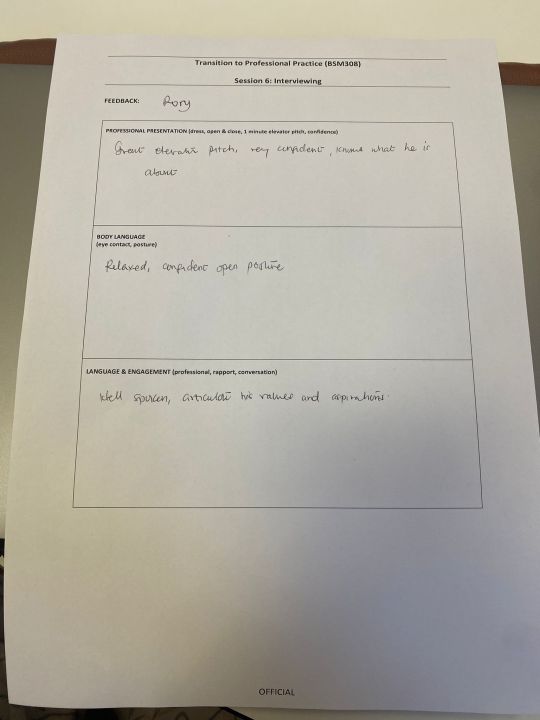
0 notes
Text
Entry 5: The importance of organisational culture and being a high-performing intern and team member.
A strong organisational culture is important in ensuring an organisation continues to prosper and flourish with its current and future employees. Even the most successful companies can suffer if they do not focus on fostering a positive organisational culture, where the experience and intellectual property of aging employees are valued and they are encouraged to transfer knowledge to new employees, without the fear of losing their jobs (Informal learning and work engagement among older workers: The importance of organizational culture, 2022).
Companies with successful human resources teams are constantly evaluating the current and future employees’ organisational culture fit. When employees converse with friends and family about their workplace the difference between a good and poor culture will most likely stand out. If staff enjoy coming to work each day they are more likely to stay with the organisation. When they are unhappy and advertising this around the office or publicly this may negatively affect staff morale. Recruitment is an expensive process that businesses spend a significant amount on. Lower rates of staff turnover, leads to saving money on training and education of new employees and maintaining the intellectual property that leaves companies when long-tenured staff depart.
Within community sporting organisations I have been a part of different organisational cultures. I have experienced poor cultures that breed negativity and are willing to accept mediocrity within their football club. On the positive side, I have enjoyed the organisational culture that promotes high standards and hard work in an enjoyable fun environment. There were intrinsic differences that are difficult to explain, however, were felt by those who were willing to buy into the good culture. In my experience in community sport, strong leadership from the top down is ultra-important, to ensure everyone is pulling in the same direction. A commonly used quote from a successful coach I had was ‘The standard you walk past is the standard you accept’. In my opinion, this epitomises the importance of organisational culture.
When I go and complete my internship, I am not only representing myself but also the Holmesglen Institute Sports Business Degree brand and name which is so strong within the industry for producing high-achieving graduates. The internship could be treated as a long interview process as many organisations may offer graduates ongoing paid work if they are high-performing interns. If an intern can display the ability to work within a team and fit in culturally this experience could lead to opportunities within the organisations’ network in the future. The individuals in charge of the interns are potential referees for future career avenues so leaving a good impression and being a high-performing intern is essential. This is not volunteer work, this is the opportunity to gain valuable industry experience.
Informal learning and work engagement among older workers: The importance of organizational culture. (2022). Development and Learning in Organizations, 36(2), 48-50. https://doi.org/10.1108/DLO-08-2021-0144
0 notes
Text
Entry 4: Critical analysis of your internship applications relative to best practice using peer feedback.
When critically analysing the internship applications I was paired up with Akshay to provide and receive peer feedback. His feedback was really helpful and constructive with most of it being positive which was reaffirming to hear. He recommended that my name and basic information header didn’t need to go on the second page of my resume as they were clear on the first page. This made complete sense and is something I will implement, my only reasoning for keeping it would be if someone lost the cover page however, these are most likely read on computers so no need for a printout. He also recommended the re-ordering of particular sentences within the cover letter would be useful in prioritising the most important information at the top. He explained that recruiters may skim over cover letters so they need to grab the attention of the reader. He liked the design and layout of my resume which I had created using Canva. This was an area I was confident in as I feel the design appeared professional yet personable He also made recommendations to ensure the skills (soft and hard) are tailored to the more business or media-focused internships accordingly.
We also went through each other’s LinkedIn to supply feedback on their current state. Both are quite bare at this stage with little activity occurring which is an area for improvement as we near our internship applications. I need to begin adding to my network and posting meaningfully to market my personal brand and increase visibility within the sports industry. Networking is a two-way street to open professional circles where you can get to know someone who may be able to assist you while offering them something in return once you’ve built a rapport (Kangan Institute Blog, 2022).
Comparing my internship applications with some of the high-end examples on Brightspace showed me there are still large areas of room for improvement to successfully answer the selection criteria and demonstrate examples of when I have shown the specific desired characteristics. I have been fortunate during my years involved in football to build a good foundation network base of individuals who have been brought together with the common interest of community sports. This network of people has assisted in my career progression and study endeavours especially when looking for referees with my application into the Sports Business degree. I look forward to challenging myself and putting myself out of my comfort zone during the internship application progress.
Kangan Institute Blog. (2022, Jan 11). 11 Tips to Help You Network Better!
0 notes
Text
Entry 3: The importance of personal marketing, branding and your unique value proposition. What is your brand and what areas do you need to improve?
I consider personal marketing, branding and your unique value proposition vitally important when separating yourself from the crowd during the recruitment process especially. If you were to hand in your resume and the recruiter found it to be of interest and suitable enough to research your background further, your personal brand and the way you have marketed yourself on the internet matters.
Your social media use and how you appear when googled can all come into play on whether you are deemed suitable for the role or a good cultural fit for the organisation. Having a strong unique value proposition that sells your value to an organisation within an informative, and succinct few sentences can help put you ahead of the other prospects for the role.
Personal marketing and branding are the way people view you and how you are portrayed. I believe if you want to be seen and known for traits, whether that be punctuality or someone who will always voice their opinion, then you must consistently display these traits in everyday life. Although it is important in a resume and cover letter to market, and positively brand yourself, actions speak louder than words. You can say you set high standards however if you cannot back that statement up with proof or a simple LinkedIn search that displays examples of times you have set high standards then they are just words that could soon be found out during the recruitment process.
My brand illustrates my love of sports from the grassroots community level to the professional leagues. My brand also shows that I am someone who can multitask and have worked hard to buy and renovate my first property while studying and working full-time. My brand displays that I am a confident leader of men and children through my experience in coaching Australian Rules football. I believe my life experience and willingness to go back to study as a mature age student shows my continual personal growth and improvement is of great importance. The areas of my brand that are opportunities for improvement are my volunteering and presence on LinkedIn. I have never been a huge fan of social media and at times have to force myself to promote the activities I am participating in which would currently show on my LinkedIn newsfeed. I need to continue to speak with confidence and believe in myself as this can occasionally waiver and I need to improve my time management as far as arriving early for class, work or appointments.
0 notes
Text
Entry 2: Your preparedness for an internship: your skills (and skills gap), and the importance of a resume and cover letter with respect to the current status of your own documents.
I feel like preparations for the internship began at the start of my Sports Business Degree in 2022. My computer skills have been gradually improving throughout the course including the use of Microsoft Suite, Adobe Suite and Canva which was a skills gap that I have slowly been closing to the point where I am sufficient in the basics of these programs. I have been working on my resume over the past year and its customisation depends on the job I am applying for.
Before this subject, I had only written two cover letters so the practice of writing customised cover letters and answering selection criteria detailed in the position descriptions for previous internships is very helpful so I can get feedback before writing my upcoming applications. I feel positive about how my current resume looks and presents to potential recruiters. I need to remain confident and articulate the skills and enthusiasm I can bring to internship partners. A strength of mine is life experience and maturity, so I need to illustrate this in the interviews. I believe as I have returned to study over the age of 30 I can use this to my advantage to display my willingness to continually learn and my commitment to change industry and work within sport is real.
I can acknowledge my opportunities for improvement in video editing and high-end presentations using Canva. Moore and Morton (2017) state there is a skills gap in written communication among higher education graduates and the expectations of employers within the workforce. I feel as jobs in the sporting industry are in such high demand and higher education providers are offering more sport-related courses employers would be able to be quite selective and only employ those with strong skillsets. I feel my availability has never been greater to complete an internship which supports my readiness as my football commitments have reduced and my study commitments will be complete by mid-year.
The more volunteering I can complete this year for different sporting organisations the better prepared I will be when I take on my internship. The importance of a strong cover letter and resume cannot be overstated as without this you do not get a seat at the table to interview. The more interviews I get to participate in and cover letters I get to write the more feedback I can receive, allowing me to refine them to be more successful.
Moore, T., & Morton, J. (2017). The myth of job readiness? Written communication, employability, and the 'skills gap' in higher education. Studies in Higher Education (Dorchester-on-Thames), 42(3), 591–609. https://doi.org/10.1080/03075079.2015.1067602
0 notes
Text
Entry 1: About Me page including: a brief on your background, sport interests, work experiences and career ambitions. In addition: a reflection on your study performance to date and areas to improve; expectations and aspirations for this subject and your internship.
My name is Rory Gregg and I am a mature-age student completing my final year of a Bachelor of Sports Business Degree at Holmesglen Institute. After completing my VCE at Patterson River Secondary College I worked in transport and logistics for many years before spending a year working in surveying and another year in pool installation. Most recently I have worked as Operations Manager for a Mornington Peninsula holiday rental company while studying. I have been involved in the sports industry for many years and have always been passionate about playing, attending, and watching live sports.
From a young age, I have participated in community team sports such as Australian Rules football, basketball, cricket (indoor & outdoor), indoor soccer and indoor beach volleyball. My main participation interest has always been football playing every year consecutively since under 9’s. My positive experience playing led to my interest in coaching. This has resulted in volunteering to coach under 15’s and 16’s junior football teams, assistant coaching at the senior level and head coach at the reserves level. As far as my professional sports interests, I am an avid follower of the AFL, NFL and NBA competitions. I enjoy playing fantasy sports with these leagues and follow the statistics closely.
Choosing to study Sports Business at Holmesglen has had its rewards and challenges, I have realised my passion and potential in the sports industry through the course, while it has also been challenging after not being a student for over 10 years and working full-time during this course. Each semester I have found more efficient ways of studying, juggling work commitments, sports participation and renovating my first home. While multitasking through it all, I have had some strong results which are pleasing, whereas, in the assessments I have received lower marks, I have then reassessed where I can improve my time management.
My design and digital skills have improved using Canva, Excel and other programs, however, I would like to further improve my Adobe Suite skills.
My expectations for this subject are to make sure I am as prepared as possible to transition to a full-time career in the sporting industry. I would like to ensure my resume stands out against other candidates and my LinkedIn is reflective of my skills and what I have to offer in a future role. This would also include the improved ability to write a professional cover letter that addresses the key selection criteria.
I am looking forward to practising my interview skills with my peers one-on-one and in front of multiple peers to replicate my upcoming internship interviews. I am anticipating gaining valuable industry experience throughout the internship and an understanding of the day-to-day expectations while working for different sporting organisations. I want to build my confidence and skills while working in a proactive positive team environment that I learn from. Although I will be preparing myself for employability there will be challenges. Pennington and Standford (2019) state that due to the increasing percentage of higher education graduates, there are vast amounts of underutilised newly-acquired skill sets going to waste in non-standard or insecure work.
Pennington, A., & Stanford, J. (2019). The future of work for Australian graduates: the changing landscape of university-employment transitions in Australia.
0 notes
Text
Sponsorship Post Bellin Health

Bellin Health
0 notes
Text
💛 Simone Biles Supports Packers 💚

Season Tickets
0 notes
Text
2023/2024 SCHEDULE
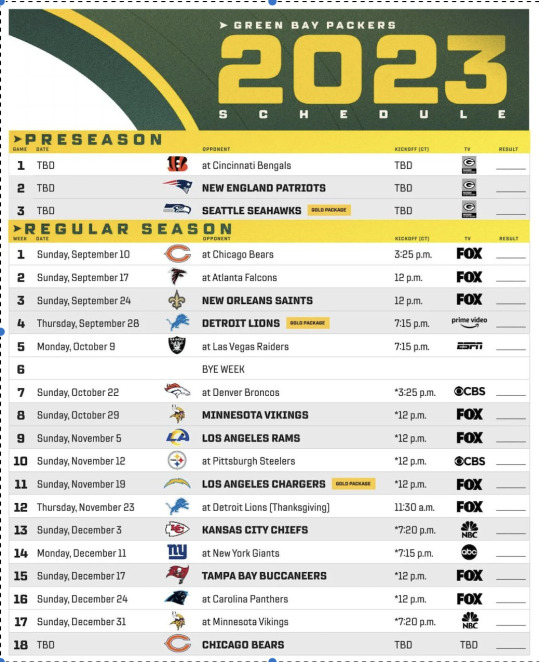
Tickets
0 notes
Text
Military Partnership
Fleet Farm
0 notes
Text
Lockeroom Speech
0 notes
Text
Jordan Love Victory Shot

Green Bay Packers
1 note
·
View note